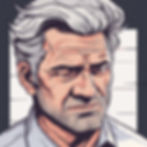
Introduction
As men age, both their testosterone levels and muscle mass naturally start to decline. Some men may start noticing symptoms of reduced testosterone, such as hair loss or fatigue. But because testosterone isn’t something that’s usually checked in routine physicals, men may not know what their symptoms are coming from.
How Much Does Testosterone Drop Over Time?
Testosterone levels gradually decline with age, typically at a rate of about 1% per year after the age of 40. Unlike women, who experience a sharp decrease in hormone levels during menopause, men undergo a more gradual process known as late-onset hypogonadism or age-related low testosterone. While many older men still maintain testosterone levels within the normal range, approximately 10% to 25% may experience low levels of the testosterone hormone. This decline in testosterone production over time underscores the importance of understanding the signs, symptoms, and potential treatment options associated with age-related hormone changes in men.
While many older men still maintain testosterone levels within the normal range, approximately 10% to 25% may experience low levels of the testosterone hormone. This decline in testosterone production over time underscores the importance of understanding the signs, symptoms, and potential treatment options

Why Does Testosterone Decrease with Age:
Reduced Leydig Cell Responsiveness: research has shown that Leydig cells, responsible for testosterone production, become less responsive to stimulation by luteinizing hormone (LH) as men age, leading to decreased testosterone synthesis. In simpler terms, the cells that make testosterone become less active as men get older.
Decline in Leydig Cell Numbers: Studies have shown that older men have fewer Leydig cells compared to younger men, contributing to a decrease in testosterone production. In simpler terms, there are fewer cells making testosterone as men age.
Arteriosclerotic Changes: Chronic microvascular arteriosclerotic disease in the aging testis can lead to fibrotic changes, impacting Leydig cell function and testosterone synthesis. This means that blood vessel changes in the testicles can affect testosterone production.
Decreased Gonadotropin-Releasing Hormone (GnRH) Production: multiple studies have shown that aging is associated with decreased production of GnRH by the hypothalamus, resulting in reduced stimulation of LH and ultimately, lower testosterone levels. In simpler terms, the brain makes less of a hormone that tells the testes to make testosterone.
Increased Sensitivity to Negative Feedback By Androgens: With age, there is an increased sensitivity to negative feedback by androgens, leading to suppression of gonadotropin secretion and further reducing testosterone production. In simpler terms, as men age, their bodies become more sensitive to signals that tell them to stop making testosterone.
How Does Ageing Affect Testosterone and Muscle Mass?
As people age, they lose about 3 to 5% of their muscle mass per decade. After age 30, this decrease can be lessened through proper nutrition and exercise. However, as men get older and testosterone levels speed up their decline, this becomes increasingly harder.
Ageing contributes to the development of sarcopenia, characterised by the progressive loss of muscle mass and strength. Understanding these dynamics is essential for implementing strategies to mitigate age-related decline and promote healthy ageing. So, what's actually happening?
Testosterone Decline: Gradual decrease by about 1% per year after 40.
Sarcopenia Development: Progressive loss of muscle mass, strength, and function
Navigating Testosterone Decline as We Age
Men may start noticing symptoms of reduced testosterone, such as hair loss or fatigue. But because testosterone isn’t something that’s usually checked in routine physicals, men may not know what their symptoms are coming from. It’s essential to understand the symptoms and effects of testosterone decline as we age to address any potential health concerns. See our blog post here for a detailed run-through on the symptoms of Low-T. Some of the main symptoms include:
Reduced sexual desire and activity
Decreased spontaneous erections or erectile dysfunction
Breast discomfort or swelling
Infertility
Height loss, low trauma fracture or low bone mineral density
Hot flushes or sweats
Conclusion
As men age, it’s natural for testosterone levels and muscle mass to decline. However, understanding the impact of ageing on testosterone and muscle mass can help individuals make informed decisions about their health and lifestyle choices. By staying active, eating a balanced diet, and being aware of the symptoms of testosterone decline, men can navigate this aspect of ageing more effectively. If you're concerned about your testosterone levels or experiencing symptoms of testosterone decline, it's essential to consult with a healthcare professional for personalised advice and guidance.
As leaders in Telehealth and offering 100% private telehealth services, The Functional Doctors offers specialised TRT care nationwide in Australia. Wherever you are, we're here for you - book your free consultation with our patient-care team to get started!
While we've ensured that everything you read on our blogs is medically reviewed and approved, the information is not intended as a substitute for professional medical advice, diagnosis, or treatment. You should never rely on this blog for specific medical advice, and if you have any questions or concerns specific to your personal case, you should speak to your doctor or reach out to our team directly.
